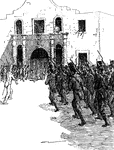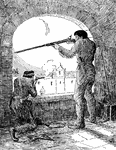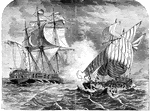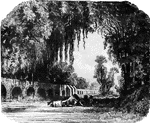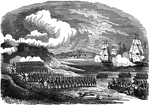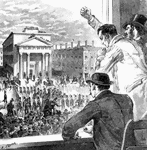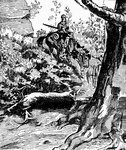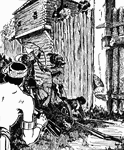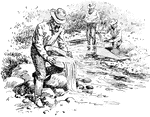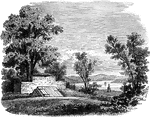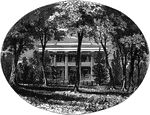The 1789-1860 American Republic ClipArt gallery provides 126 images of the time in United States history between the American Revolutionary War and the Civil War, marked by establishment and evolution of the government, and rapid growth and expansion.
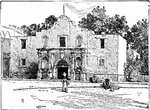
The Alamo
The Battle of the Alamo was fought in February and March 1836 in San Antonio, Texas. The conflict, a…
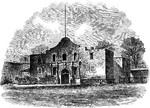
The Alamo
The Alamo, originally known as Mission San Antonio de Valero, is a former Roman Catholic mission and…
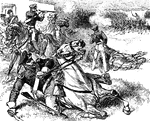
American Dragoon
The defeat of the American Dragoons. A dragoon is a soldier trained to fight on foot, but use horseback…

The Armistead Vase
The grateful citizens of Baltimore presented Colonel Armistead with an elegant silver vase, in the form…
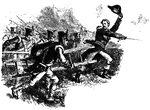
Attack on New Orleans
The attack on New Orleans, during the Battle of New Orleans during the War of 1812.
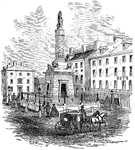
Battle of North Point Monument
A monument for The Battle of North Point, fought on September 12, 1814.
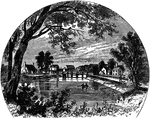
The Bridge at Bladensburg in 1861
The Battle of Bladensburg was a battle fought during the War of 1812. The defeat of the American forces…

Capitol Building After the Fire
The remains of the Capitol Building after the fire during the War of 1812.

Remains of the Capitol After the Fire of 1814
The Burning of Washington took place in 1814, during the Anglo-American War of 1812. British forces…
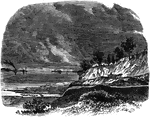
Mouth of Cascade Creek
During the Battle of Lake Erie, Perry retreated to the mouth of Cascade Creek where he built the larger…

Chalmette's Plantation
The Battle of New Orleans took place on January 8, 1815, and was the final major battle of the War of…

The Consititution Capturing the Cyane and Levant
The Constitution engaging two British ships, the Cyane and Levant.
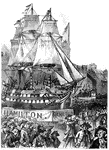
Constitution Celebration
"Celebrating the adoption of the Constitution in New York."—E. Benjamin Andrews, 1895
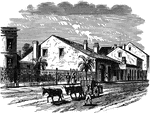
The Old Courthouse Where Jackson was Fined for Contempt of Court
When civil law was restored, Jackson was fined for contempt of court for proclaiming martial law in…

Crysler's in 1855
The Battle of Crysler's Farm, also known as the Battle of Crysler's Field, was a battle of the War of…
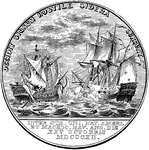
Decatur's Medal, Back
Commodore Stephen Decatur, Jr (5 January 1779 – 22 March 1820) was an American naval officer notable…

Monument to Stephen A. Douglas
Stephen Arnold Douglas (April 23, 1813 - June 3, 1861) was an American politician from the western state…

Duel Between Aaron Burr and Alexander Hamilton
A duel between Alexander Hamilton and Aaron Burr, in which Hamilton was killed.
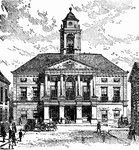
Federal Hall, 1789
Federal Hall, located at 26 Wall Street in New York City, was the first capitol of the United States…
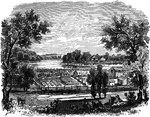
Site of Fort Defiance, in 1860
In the 1810s, William Henry Harrison used Fort Defiance as one base for his attacks against Native Americans…
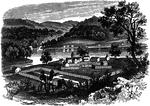
Fort Harmar
The Treaty of Fort Harmar was an agreement between the United States government and several Native American…

Ruins of Battery at Fort McHenry
Fort McHenry, in Baltimore, Maryland, is a star shaped fort best known for its role in the War of 1812…

Sallyport at Fort McHenry
Fort McHenry, in Baltimore, Maryland, is a star shaped fort best known for its role in the War of 1812…

Fort Oswegatchie
In 1749, a Suplican priest, Abbé Picquet, built a mission fort named Fort de La Présentation, or Fort…
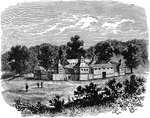
Fort Washington, On the Site of Cincinnati
Fort Washington was a fort in the early history of Cincinnati, Ohio and was used by General Josiah Harmar.

United States Frigate of 1812
The original six frigates of the United States Navy were authorized by the Congress with the Naval Act…
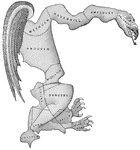
The Gerrymander
Political cartoon of unfairly redrawn congressional districts, origin of the term "gerrymander".

General Brown's Gold Box
The gold box that the city of New York gave to Gen. Jacob Brown after the battles of Chippewa and Lundy's…
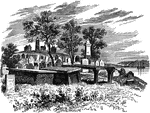
Graves of Burrows, Blyth, and Waters
The gravesite of William Burrows,Samuel Blyth, and Waters who fought in the War of 1812.

Where Hamilton Fell
The duel was held on July 11, 1804, along the west bank of the Hudson River on a rocky ledge in Weehawken,…
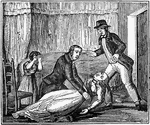
Sheriff of Hancock
Moses Adams, High Sheriff of the County of Hancock. "On the twelfth of May, eighteen hundred and fifteen,…
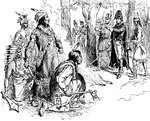
Harrison's Council with Tecumseh
William Henry Harrison's council with Tecumseh, at Vincennes in 1810. William Harrison was the governor…
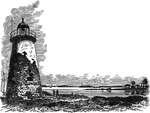
Havre de Grace
On May 3, 1813, during the War of 1812, Havre de Grace was under siege by British Admiral George Cockburn.
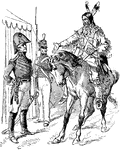
Horseshoe Bend
William Weatherford, "Red Eagle," surrenders to Andrew Jackson at the end of the Creek Indian War of…

Isaac Hull's Monument
Isaac Hull (March 9, 1773 - February 13, 1843), was a Commodore in the United States Navy.
